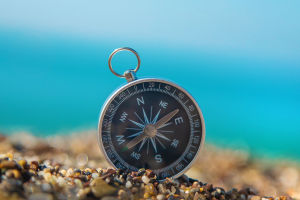Hourglasses, or sand timers, have been used for centuries as a simple and elegant way to measure time.
Consisting of two glass bulbs connected by a narrow neck, they allow sand to flow from one chamber to the other at a seemingly steady rate.
But how accurate are hourglasses in measuring time? The answer depends on several factors, including design, materials, and environmental conditions.
An hourglass uses gravity to measure time as sand flows from the top chamber to the bottom through a narrow neck. The time it takes for the upper chamber to empty depends on the amount of sand, the neck's width, and the hourglass’s overall size.
Ideally, a calibrated hourglass should provide a consistent measurement of time for a given interval, such as one minute, five minutes, or one hour.
While hourglasses are simple in concept, several variables can influence their accuracy, affecting their ability to provide reliable time measurement.
1. Sand Quality and Consistency
The sand or particles used in an hourglass must be uniform in size and shape for an accurate flow. If the sand grains are too coarse, too fine, or contain impurities, they may flow inconsistently or clog the neck.
Additionally, moisture in the air can cause the sand to clump together, affecting its flow and resulting in inaccurate timing. A dry and consistent environment is necessary for proper function.
2. Neck Width and Shape
The neck is crucial for determining how the sand flows. A properly calibrated neck allows the sand to move steadily and evenly. However, slight variations in its width or shape can disrupt timing.
If the neck is too narrow, sand may flow too slowly or get stuck, while a wider neck may speed up the flow. Hand-blown hourglasses may have more imperfections than modern ones, affecting their precision.
3. Tilt and Positioning
An hourglass must be placed on a perfectly flat surface to measure time accurately. Even a small tilt can change the rate at which sand flows, speeding it up or slowing it down.
Unlike mechanical clocks, which can compensate for position, hourglasses are highly sensitive to their environment and require careful handling.
4. Calibration and Duration
Hourglasses are typically designed to measure set intervals, requiring precise calibration of the sand amount and neck width during production.
Despite this calibration, any changes in conditions or materials can affect accuracy over time. Even well-made hourglasses can show slight variations between uses.
Hourglasses can be fairly consistent under ideal conditions but are not as precise as modern clocks or watches. They offer an approximation of time rather than an exact measure.
Small changes in sand flow, neck design, and environmental factors can cause accumulated errors over repeated uses. For general purposes, such as timing a short activity or serving as a visual countdown, hourglasses can be sufficiently accurate.
However, they are not suitable for tasks requiring precise timekeeping, like scientific measurements or detailed cooking.
Hourglasses are beautiful and functional for approximate timekeeping, but their accuracy depends on sand quality, neck design, positioning, and environmental conditions.
While they provide a consistent approximation of time, they lack the precision of digital timers or quartz watches. For most practical uses, an hourglass serves as a charming visual aid for tracking time.
However, when exact accuracy is necessary, it is better to rely on modern timekeeping devices. The hourglass remains a timeless symbol of time’s passage, with accuracy that is enchanting yet limited.


